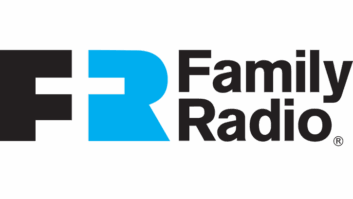The Congress has approved and President Trump has signed a $2 trillion coronavirus relief bill aimed at offsetting the economic impact of the spread of COVID-19. In that package was an additional $75 million for the Corporation for Public Broadcasting “to maintain programming and services and preserve small and rural stations threatened by declines in nonfederal revenues.”
This support is very welcome among the many rural stations the National Federation of Community Broadcasters interacts with. Yet the reality is stations across America need much more.
How serious is it? COVID-19 is the sort of financial calamity that threatens to wipe out community media.
[Read: Community Broadcaster: To Pledge or Not to Pledge]
Many of our country’s most vital stations rely on local underwriters, community events and listeners for the means to provide news, culture and education. What happens to these stations when businesses shutter, donors lose their jobs and our towns’ traditional gathering spots are no more? And, as critically, what happens to the life of a city when a community radio station dies?
Right now, there is not simply anxiety about the coronavirus cases stations are hearing about in their respective states. The stress about local economies is quite evident. There is hope the stimulus package will boost many communities. Hope, however, is not a promise. And in a pivotal year, where illness and elections bewitch the public consciousness, noncommercial media needs that promise now more than ever.
The cynic might say people can find their news on the internet. Still others would question whether these outlets playing music and local talk shows are relevant today. Yet the truth is that radio remains crucial to the overwhelming majority of Americans. Why? If the argument about ubiquity holds, wouldn’t hundreds of millions of people just be satisfied with getting their online channels of news and music?

A few are, but more are not, because they agree with people like Free Press’ Craig Aaron. Choice, localism and democracy are dear to all of us. “People need trustworthy news and information that isn’t hidden behind a paywall and more educational resources for kids who will be home from school for the foreseeable future,” Aaron writes. “This money isn’t for ‘Downton Abbey’ reruns. It should be earmarked specifically for emergency support, education, and especially local journalism.”
What’s more, increased federal and state attention on community radio stations should come with an appreciation for its effect on a city. Stations contribute to local creative economies and spark employment. The art galleries, restaurants, bars, live music venues and public spaces that find fellow travelers in community media make towns into destinations. Like businesses, noncommercial media must stay around.
CPB is incredibly valuable in this dialog, and its standards are an important starting point. However, as necessary are concerted investments by states and federal agencies into stations around matters like emergency preparedness and core infrastructure. In addition, the attitude of institutional and regional funders must change from the strictly transactional – you do this news story, you get this money, and somesuch — and more toward longer lasting community partnerships and investments that go 10 years and longer. Finally, I echo my colleagues who believe local journalism deserves greater support. The problem with an unnuanced approach is that media organizations with significant monies such as universities, or the networks disproportionately get major journalism funding while community radio is left to fend for itself. This is why long-term investment is necessary.
The coronavirus pandemic affects everyone and this situation is not changing soon. Emergency funding is excellent. It is also the prompt for new conversations on how states and regional leaders can fund on-the-ground media where it is much needed.







